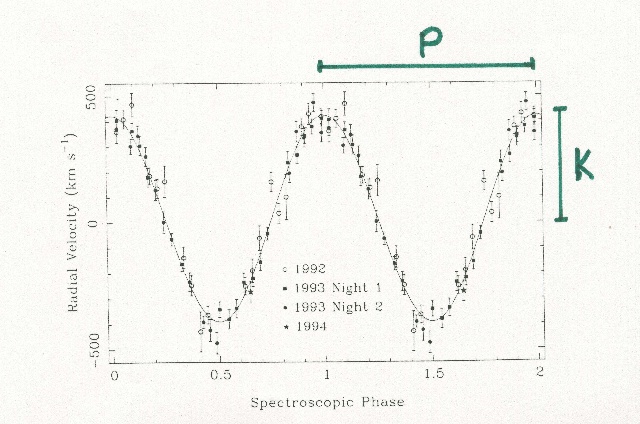The Mass Function
The mass function is determined by repeated measurements of the radial
velocity of the companion star. As the star moves through its orbit,
the radial velocity changes, tracing out a radial velocity curve.

Data for GRX 1124-68 from
Orosz et al. The x-axis is in orbital phase, rather than time, but
the principle is the same.
This curve yields two pieces of information, namely the orbital period
P and the semi-amplitude of the modulation K. These two quantities
can be combined to form the mass function f as follows:

where M1 is the mass of the unobserved star (the black hole), q is
the mass ratio, and i is the angle of inclination of the orbital
system. M1 is always greater than f, so if f is greater than
three solar masses, the upper limit for a stable neutron star,
then the compact object must be a black hole. To determine the
actual mass of the black hole, it is necessary to also measure
q, and most importantly i, which can be done from the
optical light curve.


